
|

|
| Use the text links for more information! |
No sidebar menus?, Click Here and re-select |
| East Gate
In the 18th century many pubs were clustered ouside the East Gate,
the Old London Inn and the New London Inn, the Antelope, the Bristol and the White Lion,
the Old Coach & Horses and the New Coach & Horses. The Kings Arms was situated
close to where Poundland now sits was established in 1697. In 1772 it had stables for
100 horses. These pubs served the travellers coming to Exeter for Market Day. The Kings
Arms was in fact re-built in 1886 and re-named the Era Hotel. The end this Era was in 1918.
Bobby and the blind sheriff
You can't help but notice the beautiful building housing Debenhams opened in March 1964. The store was
orinially called Bobby and Company but became Debenhams in the early 1980's when branding became more commercially
important. Bobby & Co had been a subsidiary of Debenhams since 1937. They took over the premises of Greens
(the drapers) in 1922 who had occupied the premises of one of Exeter oldest Inns, the New Inn (Catherine Street). |
The store in Catherine street was blitzed and the company moved to smaller premises in Fore Street. Before the move,
Bobbys was Exeter's largest store. Building of this new 140 ft store started in 1962. When it was opened, the City
Sheriff congratulated the architects on giving Exeter a new skyline, one she thought 'enchanting'. Unfortunately Bobby's
didn't have an Opthalmic department or she would have been their best customer.
A survey in The Times in 1987 put Debenhams well and truly in the top 10 worst buildings in Britain. As luck would have it, the building will be demolished very soon. The building closed in September 2007. |
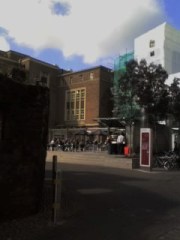
|
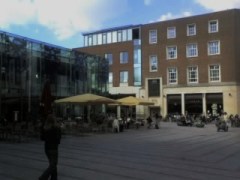
|
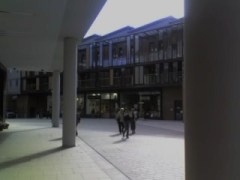
|
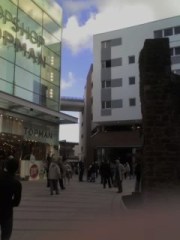
|
| Princesshay
Much of Exeter City Centre was redeveloped between 2004 and 2007, the new shopping areas opening on 20th September 2007. There was much
controversy before the building but sentiment subsided once buiding got under-way. The development was known as "Princesshay" after the
1950's version it was to replace.
The result is a modern well designed City Centre fit for any southern european city with open spaces and outside restaurants and bars. Unfortunately
Exeter is located in northern europe where the climate is a little cooler.
Before the war, there was a covered arcade at the top end of Princesshay (Eastgate Arcade), built in 1882. At the
end of the Arcade was an iron gate leading to St John's Hospital School, a bluecoat school
founded in 1631. This idea has been incorporated into the new scheme.
A statue from this school can be found at the top end of Princesshay.
The old Princesshay by all accounts represented the best 1960's architecture of its type. 1960's architecture may
well occasionally look awful, however Princesshay could not be put in this bracket.
Also at the Eastgate end of Princesshay is the Exeter Pheonix which used to sit midway down Princesshay above a covered walk-way
leading to Broadwalk House Car Park.
|
|
Plans by Land Securites (unveiled in March 2002)
can be viewed by clicking the link. See how the plans compare with what we actually got. There are pictures below.
Land Securities had systematically bought up swathes of the City Centre in order to re-develop. You cannot stop a company that owns half the City Centre! David Cornforth's excellent website, Exeter Memories contains a photo-essay of the demolition work and the re-building process. You should take a look. A link is available through this site's Local Links page (main site index). The scheme was a huge success for construction company Robert McAlpine who recycled 80% of the 43,000 tonnes of material removed using a 250-500 person-strong labour force. 14,000 cubic metres of concrete was mixed together with 5,750 tonnes of structural steelwork. 530,000 square feet of floor space was provided for apartments, cafes, bars, restaurants and public places. It was Exeter's biggest single regeneration project in history and cost a total of 225 million pounds. There is 390,000 square feet of retail space plus a new 270 space multi-storey car park. The Bedford Street part of the scheme opened several months earlier than the rest of Princesshay. |
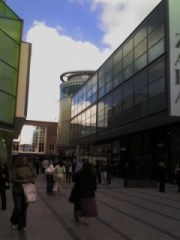
|
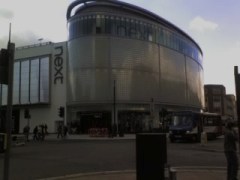
|
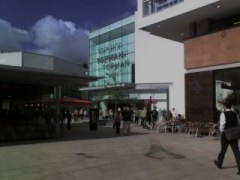
|
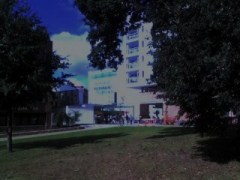
|
| Intersection
The Next store at the top of High Street replaced an existing fairly modern structure in 2007 that had begun to show signs of age.
It was completed by the end of 1961 along with the rest of Eastgate corner.
The Co-op originally occupied this store, closing in 1985 having first opened in Exeter in 1938.
Where Boots now stands used to be the Subscription rooms, becoming the Hippodrome in 1908, later converting to the
Plaza. The building was completely gutted during the blitz. The current building was completed in 1956 and was part
of a larger re-development incorporating the whole block down to Castle Street.
|